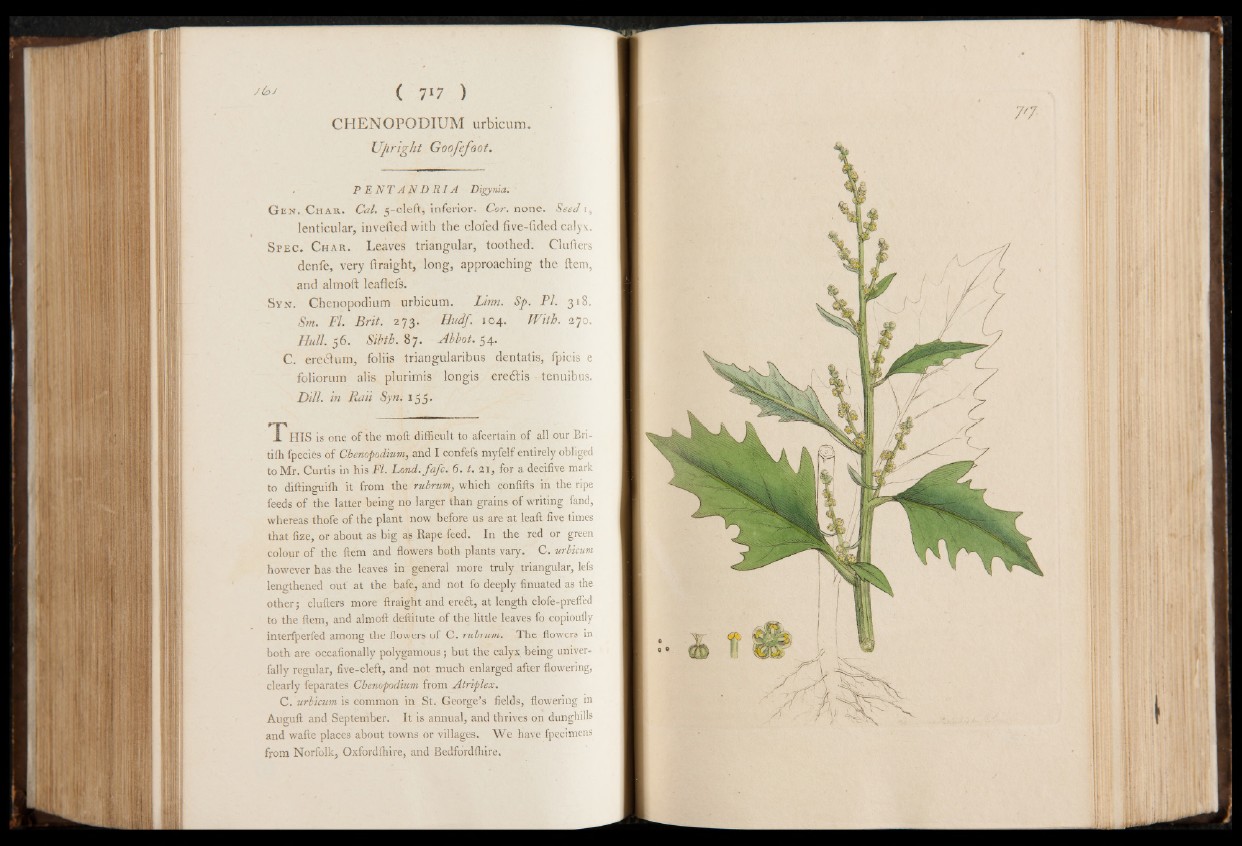
CHENOPODIUM urbicum.
Upright Goofefoot.
• P E N T ANDRI A Digynia:
Gen. Char. Cal. 5-cleft, inferior. Cor. none. Seed 1 ,
lenticular, invefted with the clofed five-tided calyx.
Spec. Char. Leaves triangular, toothed. Clutters
denfe, very ftraight, long, approaching the item,
and almoft leaflefs.
Syn. Chenopodium urbicum. Linn. Sp. PI. 3x8.
Sm. FI. Brit. 273. Hudf. 104. With. 270.
Hull. 56. Sibth. 87. Abbot. 54.
C . eredtum, foliis triangularibus dentatis, fpicis e
foliorum alis plurimis longis eredtis tenuibus.
Dill, in Rati Syn. 155.
T H I S is one of the moft difficult to afcertain of all our Bri-
tifli fpecies of Chenopodium, and I confefs myfelf entirely obliged
to Mr. Curtis in his FI. Lond.fafc. 6. t. 21, for a decifive mark
to diftinffuifli it from the rulrum,O which confifts in the ripe
feeds of the latter being no larger than grains of writing fand,
whereas thofe of the plant now before us are at leaft five times
that fize, or about as big as Rape feed. In the red or green
colour of the Item and flowers both plants vary. C. urbicum
however has the leaves in general more truly triangular, lefs
lengthened out at the bafe, and not fo deeply finuated as the
other; clutters more ftraight and ereft, at length clofe-prefled
to the ftem, and almoft deftitute of the little leaves fo copioufly
interfperfed among the flowers of C. rubrum. The flowers in
both are occafionally polygamous; but the calyx being univer-
fally regular, five-cleft, and not much enlarged after flowering,
clearly feparates Chenopodium from Atriplex.
C. urbicum is common in St. George’ s fields, flowering in
Auguft and September. It is annual, and thrives on dunghills
and wafte places about towns or villages. We have fpecimens
from Norfolk, Oxfordlhire, and Bedfordfliire.